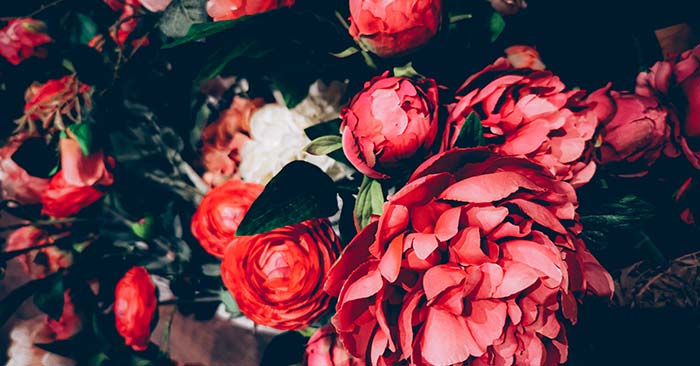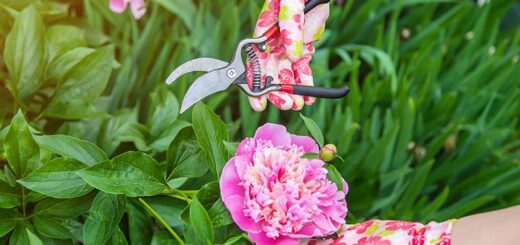Companion Plants with Peonies: Enhancing Your Garden’s Beauty and Health
Peonies are beloved for their large, lush blooms and delightful fragrance. These perennial flowers are a staple in many gardens, offering beauty and a sense of elegance. But did you know that planting companion plants with peonies can enhance their growth, deter pests, and create a stunning visual display? In this blog post, we’ll explore the best companion plants for peonies, the benefits of companion planting, and tips for designing a harmonious garden.
Why Companion Planting with Peonies?
Companion planting is a gardening technique where different plants are grown together to benefit one another. This method can improve soil health, deter pests, and enhance plant growth. When it comes to peonies, companion plants can help:
- Deter pests: Some plants have natural pest-repelling properties.
- Improve soil health: Certain plants can enrich the soil with nutrients.
- Provide support: Taller plants can offer shade or physical support to peonies.
- Enhance aesthetics: Companion plants can complement peonies, creating a visually appealing garden.

Image Source: Envato Elements
Best Companion Plants for Peonies
Choosing the right companion plants for peonies involves selecting those that thrive in similar growing conditions and offer complementary benefits. Here are some of the best companion plants to consider:
1. Alliums
Alliums, or ornamental onions, are excellent companions for peonies. Their tall, spherical blooms add height and structure to the garden, and their strong scent can deter pests like aphids and deer.
2. Irises
Irises are another great choice for companion planting with peonies. They bloom around the same time, creating a beautiful color contrast. Irises also enjoy similar growing conditions, making them an easy addition to a peony garden.
3. Foxgloves
Foxgloves are tall, striking plants that can provide a stunning backdrop for peonies. Their height can shade peonies during the hottest part of the day, and their tubular flowers attract pollinators, benefiting the overall garden ecosystem.
4. Hostas
Hostas are shade-loving plants that thrive under peonies’ partial shade. They offer lush, green foliage that complements peonies’ blooms and helps suppress weeds by covering the ground.
5. Lavender
Lavender is a fragrant herb that pairs well with peonies. Its scent can repel pests, and its purple flowers contrast the peonies’ blooms. Lavender also attracts beneficial insects like bees and butterflies.
6. Nepeta (Catmint)
Nepeta, commonly known as catmint, is a low-growing perennial that provides excellent ground cover around peonies. Its blue-purple flowers bloom for an extended period, providing continuous color in the garden.
7. Salvia
Salvia is a versatile plant that comes in various colors and heights. Its vibrant flowers attract pollinators and provide a striking contrast to peonies. Salvia’s long blooming period ensures that the garden remains colorful even after peonies have finished blooming.
8. Lady’s Mantle (Alchemilla)
Lady’s Mantle is a charming plant with frothy, yellow-green flowers and soft, lobed leaves. It thrives in conditions similar to peonies and can add a delicate touch to the garden.
9. Daylilies
Daylilies are hardy perennials that bloom after peonies, ensuring continuous color in the garden. They come in various colors and can tolerate various soil conditions.
10. Astilbes
Astilbes are shade-loving perennials with feathery plumes of flowers. They thrive in moist, well-drained soil, similar to peonies, and can add texture and color to the garden.
Designing a Peony Companion Garden
Creating a garden that showcases peonies and their companion plants involves careful planning and consideration. Here are some tips to help you design a harmonious and beautiful garden:
1. Consider Bloom Times
Select companion plants that bloom at different times to ensure continuous color and interest in your garden. For example, pair peonies with early-blooming bulbs like alliums and late-blooming perennials like daylilies.
2. Vary Heights and Textures
Incorporate plants of varying heights and textures to create depth and visual interest. Tall plants like foxgloves can provide a backdrop while low-growing plants like nepeta can serve as ground cover.
3. Match Growing Conditions
Choose plants that thrive in similar soil, light, and moisture conditions as peonies. This ensures that all plants in the garden will grow well together and reduce the need for special care.
4. Use Color Schemes
Consider a color scheme that complements the peonies’ blooms. For instance, pair pink peonies with purple lavender and blue salvia for a harmonious look, or create a bold contrast with yellow daylilies and orange irises.
5. Provide Adequate Spacing
Give each plant enough space to grow and spread without crowding others. This helps prevent competition for resources and allows each plant to thrive.
6. Incorporate Fragrance
Combine fragrant plants like lavender and salvia with peonies to create a sensory garden experience. The pleasant scents can attract pollinators and deter pests.
Benefits of Companion Planting with Peonies
Companion planting offers several benefits beyond aesthetics. Here are some reasons to incorporate companion plants into your peony garden:
1. Pest Control
Certain companion plants have natural pest-repelling properties, reducing the need for chemical pesticides. For example, lavender and alliums can deter aphids and deer, protecting peonies from damage.
2. Soil Improvement
Some plants, like legumes, can fix nitrogen in the soil, enriching it for other plants. Companion planting can improve soil health and fertility, benefiting the entire garden.
3. Pollinator Attraction
Plants like salvia and foxgloves attract bees, butterflies, and other pollinators. These beneficial insects can help improve peony pollination and overall garden health.
4. Weed Suppression
Ground-cover plants like nepeta and hostas can help suppress weeds by shading the soil and reducing space for weed growth. This can reduce the need for manual weeding and keep the garden looking tidy.
5. Enhanced Aesthetics
A well-planned companion garden can create a visually stunning display. Combining different colors, textures, and heights can make the garden more dynamic and appealing.
Tips for Maintaining a Peony Companion Garden
To ensure your peony companion garden thrives, follow these maintenance tips:
1. Watering
Water your garden regularly, especially during dry spells. Ensure that peonies and their companions receive adequate moisture without becoming waterlogged.
2. Mulching
Apply mulch around the base of your plants to retain moisture, suppress weeds, and regulate soil temperature. Organic mulches like compost or straw are excellent choices.
3. Pruning
Regularly deadhead spent flowers to encourage continuous blooming and prevent disease. Prune back any overgrown or damaged plants to maintain a tidy appearance.
4. Fertilizing
Feed your garden with a balanced fertilizer to promote healthy growth. Be mindful of each plant’s nutrient needs and adjust your fertilization routine accordingly.
5. Monitoring for Pests and Diseases
Keep an eye out for pests and diseases that may affect your plants. Early detection and treatment can prevent significant damage and keep your garden healthy.
Conclusion
Companion planting with peonies offers numerous benefits, from pest control and soil improvement to enhanced aesthetics and pollinator attraction. You can create a beautiful, healthy, and thriving garden by selecting the right companion plants and following good gardening practices.
FAQs on Companion Plants with Peonies
Q: Can peonies and roses be planted together?
A: Peonies and roses can be planted together as they have similar soil and sunlight requirements, making them excellent companions.
Q: What vegetables can be planted with peonies?
A: Peonies can be planted near vegetables like beans and peas, which fix nitrogen in the soil, benefiting the peonies’ growth.
Q: How do you choose the best location for companion plants with peonies?
A: Choose a location with well-drained soil and full sun to partial shade. Ensure the site allows for adequate air circulation to prevent fungal diseases.
Q: Can herbs be good companions for peonies?
A: Yes, herbs like thyme, sage, and chives can be excellent companions for peonies. They help deter pests and attract beneficial insects.
Q: Do peonies require specific soil pH for optimal growth?
A: Peonies prefer slightly acidic to neutral soil (pH 6.0-7.0). Test your soil and amend it if necessary to match these conditions.
Q: What annual flowers can be planted with peonies?
A: Annual flowers like marigolds, zinnias, and cosmos can be planted with peonies to provide additional color and deter pests.
Q: How close should companion plants be to peonies?
A: Space companion plants about 1 to 2 feet away from peonies to ensure each plant has enough room to grow and receive adequate nutrients.
Q: Are there any plants that should be avoided when planting with peonies?
A: Avoid planting peonies with aggressive ground covers or plants with extensive root systems, like bamboo, as they can compete for resources.
Q: Can peonies be planted with bulbs?
A: Yes, peonies can be planted with spring bulbs like tulips and daffodils. These bulbs provide early color and complement the peonies’ bloom time.
Q: What is the best time to plant companion plants with peonies?
A: The best time to plant companion plants with peonies is in the fall or early spring, giving them time to establish before the growing season.
Q: How can I improve soil drainage for peonies and their companions?
A: Add organic matter like compost or well-rotted manure to improve soil drainage. Raised beds can also enhance drainage.
Q: Can ground covers be used as companion plants with peonies?
A: Ground covers like creeping thyme, and sedum can be used as companion plants to help suppress weeds and retain soil moisture.
Q: Do peonies and their companions need winter protection?
A: Peonies are hardy and generally do not need winter protection, but mulching around the base can protect roots and retain moisture.
Q: How can I prevent fungal diseases in a peony companion garden?
A: Ensure good air circulation, avoid overhead watering, and space plants properly to prevent fungal diseases in a peony companion garden.
Q: What role do pollinators play in a peony companion garden?
A: Pollinators like bees and butterflies are crucial for a healthy garden. Companion plants that attract pollinators can enhance the garden’s productivity.


